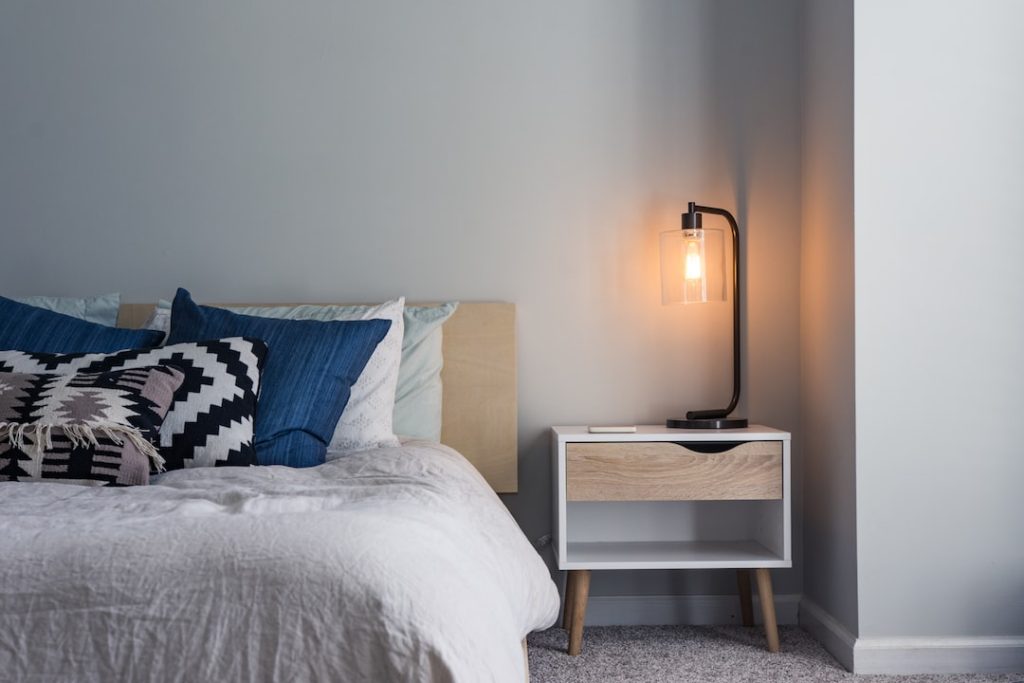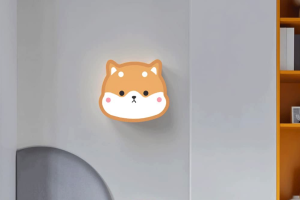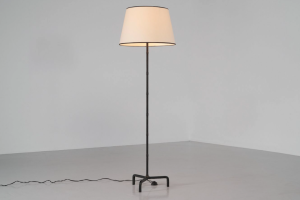Shedding Light on Modern Table Lamps: Illuminating Your Space with Style

Table lamps have been a staple in interior design for centuries. They not only provide functional lighting but also serve as decorative elements that can enhance the overall aesthetic of a space. From their humble beginnings as simple oil lamps to the modern, stylish designs we see today, table lamps have evolved to become an essential part of any well-designed room. Vertigolamp
Key Takeaways
- Table lamps have evolved from being purely functional to being stylish decor pieces.
- When choosing a table lamp, consider factors such as the room’s purpose, size, and existing decor.
- Lighting is a crucial aspect of interior design, affecting mood, ambiance, and functionality.
- Modern table lamp designs include minimalist, industrial, and other styles to suit various tastes.
- Table lamp bases come in different materials, such as metal, glass, and wood, each with its own aesthetic and practical benefits.
- Understanding wattage, lumens, and color temperature is essential when selecting light bulbs for your table lamp.
- Different rooms require different types of table lamps, such as task lighting for the office and ambient lighting for the bedroom.
- Get creative with your table lamp by mixing and matching with decor to create a cohesive look.
- LED table lamps offer energy efficiency and longevity, making them a smart choice for eco-conscious consumers.
- Proper maintenance and care, such as dusting and avoiding harsh chemicals, can help keep your table lamps in top condition.
The Evolution of Table Lamps: From Functionality to Style
Early table lamps were primarily used for their functionality, providing a source of light in homes before the invention of electricity. These lamps were often made of materials such as brass or iron and featured a simple design with a base, stem, and shade. The purpose of these lamps was purely practical, with little emphasis on style or aesthetics.
However, as electricity became more widely available in the late 19th and early 20th centuries, table lamps began to evolve into decorative pieces as well. Art Nouveau and Art Deco styles influenced the design of table lamps during this time, with intricate details and ornate shapes becoming more common. These lamps were not only functional but also served as statement pieces that added a touch of elegance to any room.
In modern times, table lamps have become a fusion of functionality and style. With advancements in technology and design, table lamps now come in a wide variety of shapes, sizes, and materials. From sleek and minimalist designs to bold and artistic pieces, there is a table lamp to suit every taste and interior design style.
Choosing the Right Table Lamp: Factors to Consider
When choosing a table lamp for your space, there are several factors to consider. First, you need to consider the size and scale of the lamp in relation to the furniture and overall room design. A small lamp may get lost on a large table, while a large lamp may overwhelm a small space.
Next, consider the style and design of the lamp. Do you want a lamp that blends seamlessly with your existing decor, or do you want it to make a statement and become a focal point in the room? The style of the lamp should complement the overall aesthetic of the space.
Additionally, think about your lighting needs. Do you need a lamp that provides task lighting for reading or working, or do you want a lamp that creates a soft, ambient glow? Consider the type of lighting you need and choose a lamp that can fulfill that purpose.
Lastly, consider your budget. Table lamps can range in price from affordable options to high-end designer pieces. Set a budget and look for lamps within that range that meet your criteria in terms of size, style, and lighting needs.
The Importance of Lighting in Interior Design
| Aspect | Metric |
|---|---|
| Functionality | Proper lighting can enhance the functionality of a space by providing adequate illumination for tasks and activities. |
| Aesthetics | Lighting can be used to highlight architectural features, create visual interest, and set the mood or ambiance of a space. |
| Energy Efficiency | Using energy-efficient lighting fixtures and bulbs can reduce energy consumption and lower utility bills. |
| Health and Well-being | Lighting can affect our circadian rhythms and overall health and well-being. Proper lighting can improve mood, productivity, and sleep quality. |
| Sustainability | Choosing sustainable lighting options, such as LED bulbs and fixtures, can reduce environmental impact and promote sustainable design practices. |
Lighting plays a crucial role in interior design as it can greatly affect the mood and ambiance of a room. The right lighting can make a space feel warm and inviting, while poor lighting can make it feel cold and unwelcoming. Table lamps are an important component of creating a well-lit space as they provide both functional and decorative lighting.
There are three main types of lighting used in interior design: ambient, task, and accent lighting. Ambient lighting provides overall illumination for a room and is usually provided by ceiling fixtures or natural light. Task lighting is focused lighting used for specific activities such as reading or working. Accent lighting is used to highlight specific objects or areas in a room.
Table lamps can provide all three types of lighting depending on their design and placement. They can serve as ambient lighting when placed on a side table or console table to provide overall illumination. They can also provide task lighting when placed on a desk or bedside table for reading or working. Additionally, table lamps with adjustable shades or dimmer switches can be used as accent lighting to highlight artwork or architectural features in a room.
Modern Table Lamp Designs: Minimalism, Industrial, and More
In recent years, there has been a shift towards minimalist and industrial design styles in interior design, and table lamps have followed suit. Minimalist table lamps are characterized by clean lines, simple shapes, and a focus on functionality. These lamps often feature neutral colors and materials such as metal or wood.
Industrial table lamps, on the other hand, embrace a more rugged and raw aesthetic. They often feature exposed bulbs, metal accents, and distressed finishes. These lamps are perfect for adding a touch of edginess to a space and can be used to create a modern, urban look.
Incorporating modern table lamps into your decor is relatively easy. Choose lamps that complement the existing color scheme and style of your space. For a minimalist look, opt for lamps with sleek lines and neutral colors. For an industrial look, choose lamps with metal accents and exposed bulbs. Remember to consider the size and scale of the lamp in relation to the furniture and overall room design.
Materials Matter: Exploring the Different Types of Table Lamp Bases

The base of a table lamp is an important component that not only provides stability but also contributes to the overall aesthetic of the lamp. There are several common materials used for table lamp bases, each with its own pros and cons.
Metal bases, such as brass or stainless steel, are popular choices for table lamps due to their durability and versatility. Metal bases can be polished to a high shine or given a brushed finish for a more subdued look. They can also be molded into various shapes and designs, making them suitable for a wide range of interior styles.
Glass bases are another popular option for table lamps as they add a touch of elegance and sophistication to any space. Glass bases can be clear or colored, smooth or textured, depending on the desired look. They can also be paired with different types of shades to create different lighting effects.
Wooden bases are often chosen for their natural beauty and warmth. Wood can be carved or turned into various shapes and finishes, making it a versatile material for table lamp bases. Wooden bases are particularly well-suited for rustic or traditional interior styles.
Ceramic bases offer a wide range of colors, patterns, and textures, making them a popular choice for table lamps. Ceramic bases can be glazed or unglazed, smooth or textured, and can be paired with different types of shades to create different lighting effects.
When choosing the right material for your table lamp base, consider the overall style and aesthetic of your space. Choose a material that complements the existing decor and adds to the overall ambiance of the room.
Light Bulbs 101: Understanding Wattage, Lumens, and Color Temperature
Choosing the right light bulb for your table lamp is just as important as choosing the lamp itself. There are several measurements to consider when selecting a light bulb: wattage, lumens, and color temperature.
Wattage refers to the amount of energy a light bulb consumes. In the past, wattage was used as an indicator of brightness, with higher wattage bulbs producing more light. However, with the advent of energy-efficient LED bulbs, wattage is no longer an accurate measure of brightness.
Lumens, on the other hand, measure the actual brightness of a light bulb. The higher the lumens, the brighter the light. When choosing a light bulb for your table lamp, consider the desired level of brightness for the space. A higher lumen bulb may be suitable for task lighting, while a lower lumen bulb may be better for ambient lighting.
Color temperature refers to the color appearance of light emitted by a bulb. It is measured in Kelvin (K) and can range from warm (yellowish) to cool (bluish) tones. The color temperature you choose can greatly affect the mood and ambiance of a room. Warm white light (2700-3000K) creates a cozy and inviting atmosphere, while cool white light (4000-5000K) creates a bright and energizing ambiance.
When choosing a light bulb for your table lamp, consider the desired level of brightness, the color temperature that best suits your space, and the energy efficiency of the bulb. LED bulbs are a popular choice for table lamps as they are energy-efficient, long-lasting, and available in a wide range of brightness levels and color temperatures.
Table Lamps for Different Rooms: Bedroom, Living Room, Office, and More
Different rooms in your home have different lighting needs, and table lamps can help fulfill those needs. When choosing a table lamp for a specific room, consider the function of the room and the type of lighting required.
In the bedroom, table lamps are often used as bedside lighting for reading or creating a relaxing ambiance. Choose lamps with adjustable shades or dimmer switches to control the level of brightness. Consider the size of your bedside table and choose lamps that are proportionate to the space.
In the living room, table lamps can be used to create ambient lighting or to highlight specific areas or objects. Place lamps on side tables or console tables to provide overall illumination. Choose lamps that complement the existing decor and add to the overall aesthetic of the space.
In the office, table lamps are often used for task lighting to provide focused illumination for reading or working. Choose lamps with adjustable arms or shades that can be positioned to direct light where it is needed. Consider the size of your desk and choose lamps that are proportionate to the space.
When choosing table lamps for different rooms, consider the overall style and aesthetic of each space. Choose lamps that complement the existing decor and add to the overall ambiance of the room.
Creative Ways to Style Your Table Lamp: Mixing and Matching with Decor
Table lamps can be used as a decorative element to enhance the overall aesthetic of a space. There are several creative ways to style your table lamp and make it a focal point in the room.
One idea is to mix and match table lamps with other decor elements. Pair a sleek and modern table lamp with a vintage-inspired side table for an eclectic look. Or, pair a bold and colorful table lamp with neutral furniture to create a statement piece.
Another idea is to use table lamps as a way to add pops of color to a space. Choose lamps in vibrant hues that complement the existing color scheme. Place them on side tables or console tables to create visual interest and draw the eye.
You can also use table lamps to create a cohesive look in a room. Choose lamps that have similar design elements or materials as other decor pieces in the space. For example, if you have a brass chandelier in your dining room, choose table lamps with brass accents to tie the room together.
When styling your table lamp, consider the overall aesthetic of the space and choose lamps that enhance that aesthetic. Experiment with different combinations and arrangements until you find the perfect look.
The Benefits of LED Table Lamps: Energy Efficiency and Longevity
LED table lamps offer several advantages over traditional table lamps. First and foremost, LED bulbs are highly energy-efficient, consuming up to 80% less energy than traditional incandescent bulbs. This not only reduces your energy consumption but also lowers your electricity bills.
LED bulbs also have a much longer lifespan compared to traditional bulbs. While incandescent bulbs typically last around 1,000 hours, LED bulbs can last up to 50,000 hours or more. This means you won’t have to replace your bulbs as frequently, saving you time and money in the long run.
LED bulbs are also available in a wide range of brightness levels and color temperatures, allowing you to customize the lighting in your space. Whether you need bright task lighting or soft ambient lighting, there is an LED bulb to suit your needs.
When choosing an LED table lamp, look for lamps that are specifically designed to be used with LED bulbs. These lamps will have built-in dimmer switches or adjustable shades to control the level of brightness. Additionally, make sure the lamp is compatible with the type of LED bulb you choose, as not all LED bulbs are the same size or shape.
Maintenance and Care: Keeping Your Table Lamps in Top Condition
To keep your table lamps in top condition, regular maintenance and care are essential. Here are some tips to help you keep your lamps looking and functioning their best:
– Dust your lamps regularly using a soft cloth or feather duster. This will prevent dust from accumulating on the surface and affecting the overall appearance of the lamp.
– Clean the lampshade periodically using a soft brush or vacuum attachment. Be gentle when cleaning fabric shades to avoid damaging the material.
– If your lamp has a glass or metal base, use a mild glass cleaner or metal polish to remove any smudges or fingerprints. Be sure to follow the manufacturer’s instructions and test any cleaning products on a small, inconspicuous area first.
– Check the electrical components of your lamp regularly for any signs of wear or damage. If you notice any frayed wires or loose connections, it is best to have a professional electrician repair or replace them.
– When changing light bulbs, make sure the lamp is unplugged and the bulb has cooled down before handling it. Use a clean cloth or gloves to avoid touching the bulb with bare hands, as oils from your skin can cause the bulb to burn out prematurely.
By following these maintenance and care tips, you can ensure that your table lamps remain in top condition and continue to provide functional and decorative lighting for years to come.
Table lamps have come a long way since their humble beginnings as simple oil lamps. Today, they are an essential part of any well-designed room, providing both functional and decorative lighting. When choosing a table lamp, consider factors such as size, style, lighting needs, and budget. Table lamps can be used to create different types of lighting in a space, including ambient, task, and accent lighting. They come in a wide range of designs and materials, allowing you to find the perfect lamp to suit your style and aesthetic. LED table lamps offer several advantages over traditional lamps, including energy efficiency and longevity. By properly maintaining and caring for your table lamps, you can ensure that they remain in top condition and continue to enhance your space for years to come.




